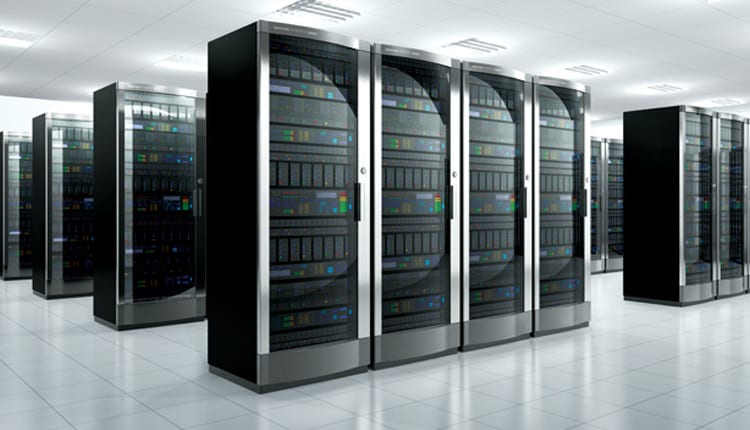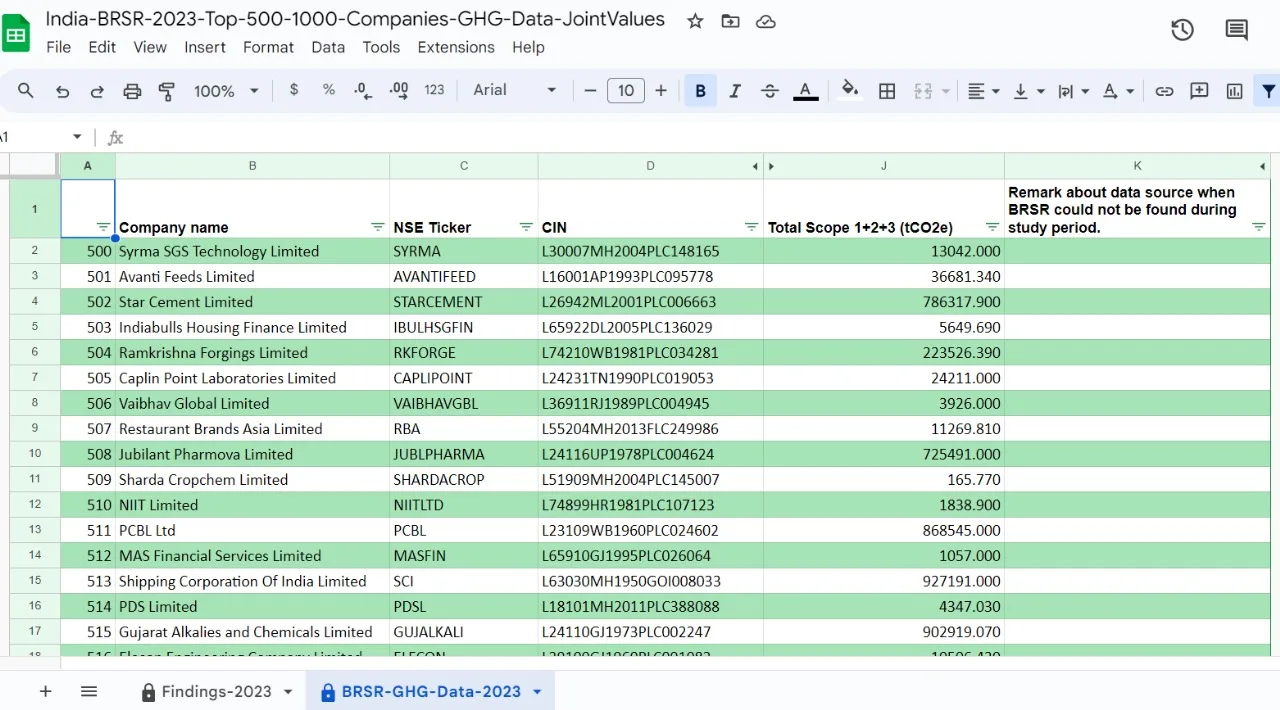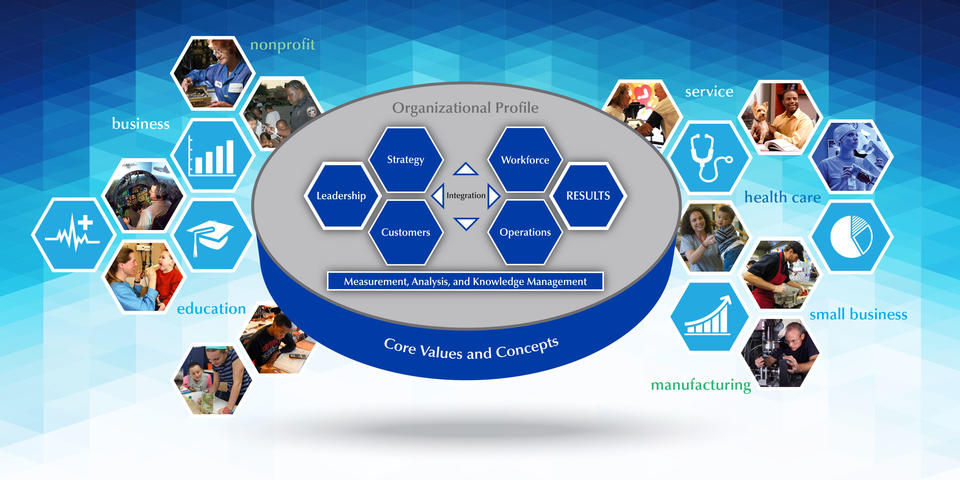
Data Centers: Growth, SDGs, Carbon Emission and ESG Risk
In our digital age, data centers, much like our hearts, continuously beat with activity and learning, especially in the era of AI. As our world becomes increasingly data-dependent, it becomes paramount to explore the growth trajectory of data centers, their pivotal role in advancing Sustainable Development Goals (SDGs), and the ever-pressing challenges encompassed by Environmental, Social, and Governance (ESG) considerations.
Data centers are on the brink of overtaking the aviation industry in terms of carbon emissions, underlining their substantial environmental footprint. Meanwhile, in India, the data subscription market is experiencing remarkable expansion, with a staggering 881.25 million internet subscribers. With the average subscriber engaging in an hour of daily OTT streaming, there exists the potential for approximately 11.5 million tons of CO2 emissions annually, equivalent to the emissions generated if 1.15 million Indians were to individually circle the Earth each year in their cars. Addressing this issue necessitates a proactive approach, beginning with the design phase of data centers, integrating ESG considerations into regular workflow systems, and establishing emission standards for data management in India. These insights empower data center providers and sustainability advocates to make informed decisions in our increasingly data-centric world.
How Data Centers Are Catalysing SDGs
In today’s digital age, data centers are instrumental in achieving Sustainable Development Goals (SDGs) by contributing directly and indirectly in various ways as follows.
- SDG 9: Industry, Innovation, and Infrastructure: Data centers are at the heart of digital innovation, serving as the backbone of technological advancements. They provide the essential infrastructure required for cloud computing, which has revolutionized industries such as finance, healthcare, and entertainment. For example, the financial sector relies on data centers to process massive volumes of transactions efficiently, fostering economic growth.
- SDG 11: Sustainable Cities and Communities: Data centers are pivotal in developing smart cities and fostering sustainable urbanization. They enable efficient urban management systems, enhance public services, and reduce resource wastage. Smart grid systems, powered by data centers, optimize energy distribution in cities, contributing to energy efficiency and reduced emissions.
- SDG 17: Partnerships for the Goals: Data centers play a crucial role in facilitating global partnerships and collaborations. They connect individuals, businesses, and governments across the world, enabling information sharing and international cooperation. This connectivity is essential for achieving all SDGs, as it supports initiatives in education, healthcare, disaster response, and more.
- SDG 3: Good Health and Well-being: While not a direct contributor, data centers indirectly support health-related goals. They enable telemedicine, medical research, and data-driven healthcare solutions. For example, data centers help analyze large datasets to identify disease patterns and develop personalized treatment plans, ultimately improving healthcare access and outcomes.
- SDG 4: Quality Education: Data centers indirectly promote education by facilitating online learning platforms, e-learning resources, and digital access to educational content. The COVID-19 pandemic highlighted the importance of data centers in ensuring continuous learning through remote education, especially in underserved areas.
- SDG 8: Decent Work and Economic Growth: The digital economy, driven by data centers, generates employment opportunities both directly and indirectly. The growth of e-commerce, digital marketing, and technology services fosters economic development and job creation.
- SDG 10: Reduced Inequality: Data centers connect underserved populations to digital services and economic activities. For example, mobile data centers can bring internet access to remote areas, reducing the digital divide and promoting inclusivity.
- SDG 16: Peace, Justice, and Strong Institutions: While not direct contributors, data centers indirectly support the goal of promoting accountable and inclusive institutions. They assist in governance, law enforcement, and transparency efforts by securely storing and analyzing vast amounts of data.
- SDG 13: Climate Action: Although data centres consume energy, they are powering major technology companies, including Google which support several tools and climate change solutions. Maps and navigation services provided by Google and other providers not only enable modern-age surface and air navigation but also help in monitoring forest fires, and analysis of agriculture patterns that are important to make plans and policies to fight climate change. All these services depend on data centres at the core.
The Growth Projections of Data Centers
In the digital age, data centers aren’t just facilities; they’re the beating heart of a data-driven world. This data deluge is the driving force behind the exponential growth of the global data center market, projected to reach approximately $500 billion by 20261, with an impressive compound annual growth rate (CAGR) of over 15% from 2021 to 2026. These statistics are not just numbers; they represent the reality of our interconnected lives, powering cloud computing, the Internet of Things (IoT), and every facet of our digital existence. Delving deeper into this data-driven phenomenon, a white paper by IDC titled ‘The Digitization of the World: From Edge to Core’2 predicts that the Global Datasphere will grow from 33 Zettabytes (ZB) in 2018 to a staggering 175 ZB by 2025 globally. These projections emphasize the indispensable role of data centers in a world that is always on, always learning, and always evolving.
Carbon Emissions Associated With Data Centers
Although data centers and data transfer services presently account for approximately 1.2% of the world’s energy-related carbon emissions3, this figure underscores the expanding carbon footprint of our progressively digital lifestyles. Projections indicate that global data center energy consumption could reach a staggering 651 terawatt-hours (TWh) by 20303, equivalent to about 3.2% of the world’s total electricity consumption – surpassing the emissions from the global aviation industry. This quantity of emissions from data centres will be even bigger than emissions from the shipping industry.
One of the most concerning outcomes of this energy consumption is the carbon footprint left by data centers. The carbon emissions associated with data center operations are substantial, rivaling those of the aviation industry. These emissions contribute significantly to global greenhouse gas (GHG) levels, intensifying climate change concerns. Therefore, mitigating the environmental impact of data centers is a critical ESG risk imperative.
Carbon Emissions by Data Consumers in India
Every hour of over-the-top (OTT) streaming results in the emission of 36 grams of CO2, as outlined in a December 2020 IEA report4. In the report from the Telecom Regulatory Authority of India (TRAI)5, it’s revealed that India had 881.25 million internet subscribers as of March 2023. If these subscribers engage in an average of 1 hour of OTT streaming daily, this usage has the potential to contribute to approximately 11.5 million tons of CO2 emissions annually. This means 1.15 million Indians circle this earth every year in their individual cars, considering 250 gms of CO2 emission per kilometre for gasoline-powered passenger vehicles as per US EPA tool6.
The data subscription market in India is undergoing significant expansion, both in breadth and depth. While the number of internet subscribers is on the rise, the primary catalyst for this growth is the substantial increase in per capita data consumption. Several factors contribute to this surge, including the presence of data providers, mobile phone and electronic device manufacturers, expanded electrification in rural areas, and the adoption of online work and education by various institutions such as educational institutions, courts of law, and public transport. Additionally, the emergence of over-the-top (OTT) content providers has further fueled this data-driven ecosystem.
Key players like Reliance Jio, Airtel, and Vi (Vodafone Idea) play a pivotal role in supporting and strengthening this data-driven ecosystem in India. A notable shift in this landscape is that every individual now has the capability to become a content creator, sharing their views and content through data usage. This evolution underscores the transformative power of data in reshaping how information is created, disseminated, and consumed in India.
Factors Driving Data Revolution
The growth projections of data centers are intrinsically linked to the digital revolution that has enveloped our world. Key factors driving this explosive expansion include:
- Cloud Computing Dominance: Cloud computing has revolutionized the way businesses operate and individuals access information. It has eliminated the need for extensive on-premises infrastructure, prompting organizations to rely on cloud service providers and data centers to host their applications and data.
- IoT Proliferation: The Internet of Things (IoT) has unleashed a tidal wave of connected devices, from smart appliances and wearables to industrial sensors. Each of these devices generates data, creating an insatiable appetite for data storage and processing, primarily within data centers.
- Big Data and Analytics: Businesses now recognize the value of data-driven insights. The pursuit of big data analytics, artificial intelligence, and machine learning demands enormous computational power and storage capacity, much of which is housed in data centers.
- Remote Work and Digital Services: The global shift towards remote work and the growing popularity of digital services, from streaming platforms to e-commerce, require robust data center infrastructure to ensure seamless user experiences.
The Evolving Landscape of Data Centers
To meet the burgeoning demand, data centers are undergoing a profound transformation:
- Edge Computing: Edge computing is decentralizing data processing by moving it closer to the data source. This approach reduces latency and accelerates data processing for time-sensitive applications, such as autonomous vehicles and real-time analytics.
- Sustainability Initiatives: As concerns over environmental sustainability grow, data centers are adopting eco-friendly practices. These include the use of renewable energy sources, efficient cooling systems, and a commitment to reducing their carbon footprint.
- Hybrid and Multi-Cloud Strategies: Many organizations are adopting hybrid and multi-cloud strategies, combining on-premises infrastructure with public and private cloud services. This approach optimizes cost, performance, and scalability while relying on data centers to facilitate seamless integration.
- Security and Compliance: With the increasing value of data, data centers are doubling down on security measures. Compliance with data protection regulations, robust cybersecurity protocols, and disaster recovery capabilities are paramount.
ESG Risk in Data Centers
While supporting the achievement of SDGs, the rapid expansion of data centres also entails critical ESG (Environmental, Social, Governance) risks that should not be overlooked.
Environmental Risks
1. Energy Consumption and Carbon Footprint: One of the most pressing ESG risk imperatives in the data center industry is its escalating energy consumption. As digitalization continues to pervade every aspect of our lives, the demand for data center services has surged. These facilities house countless servers, storage units, and networking equipment, all of which require a significant amount of electricity to function efficiently.
2. Water Usage and Resource Management: Another vital aspect of environmental risk in data centers is their water-intensive cooling systems. Data centers rely on extensive cooling mechanisms to maintain the optimal temperature for equipment, ensuring uninterrupted operation. These cooling systems consume large volumes of water, leading to resource depletion, especially in regions already grappling with water scarcity. The ESG imperative here is to find innovative ways to reduce water usage, implement water-efficient cooling solutions, explore the use of recycled water, and adopt responsible water recycling practices.
3. E-Waste Management: The management of electronic waste (e-waste) is another environmental risk associated with data centers. As these facilities continually upgrade and decommission hardware to keep up with technological advancements, the disposal of electronic components and materials becomes a pressing concern. To address this risk imperative, data centers must adopt responsible e-waste management practices.
Social Risks in Data Centers
In the context of data centers, various social risk imperatives deserve careful consideration:
1. Workforce Safety
- Occupational Health: Continuous exposure to high levels of noise, a common hazard in data center environments, can lead to hearing damage and other health issues. Implementing hearing protection measures, conducting regular health assessments, and promoting overall worker well-being are essential aspects of mitigating this risk.
- Environmental Hazards: The operation of data centers generates a substantial amount of heat, exposing workers to extreme temperatures that can lead to heat-related illnesses.
- Machinery and Electrical Hazards: The intricate electrical and mechanical systems in data centers pose electrical hazards. Workers must be trained, safety protocols established, and equipment properly maintained to mitigate these risks. The risk of arc flash accidents in data centers can result in significant damage, fire, injury, or death.
2. Community Impact
Data centers can significantly impact the communities in which they operate. Managing this impact is crucial to avoid adverse social consequences.
- Employment Opportunities: Data centers bring economic opportunities but must ensure equitable employment practices, provide opportunities for local talent, and promote diversity and inclusion within the workforce.
- Community Engagement and Communication: Effective communication and engagement with the local community are essential. Data center operators must maintain transparent channels of communication, address community concerns, and involve stakeholders in decision-making processes.
Addressing these social risk imperatives, including occupational health and safety, is essential for the long-term sustainability and resilience of the data center industry. Prioritizing social responsibility alongside environmental and governance considerations enables data centres to earn social licences to operate.
Governance Risks in Data Centers
Governance risks within data centers encompass various aspects related to corporate governance, compliance, and ethical considerations. These risks are integral components of the broader ESG (Environmental, Social, Governance) framework used to assess the industry’s sustainability and ethical practices.
1. Data Privacy and Security
- Protection of Sensitive Information: Data centers house vast amounts of confidential information, making the safeguarding of sensitive data a crucial governance risk. Measures include robust cybersecurity, access controls, and data encryption.
- Compliance with Data Privacy Regulations: Data centers must navigate diverse data privacy regulations across jurisdictions. Compliance measures involve understanding local laws, implementing comprehensive frameworks, and conducting regular audits.
2. Ethical Governance
- Transparency and Accountability: Ethical governance in data centers entails maintaining transparency in operations and being accountable for decisions and their consequences.
- Ethical Sourcing and Procurement: Ensuring ethical sourcing and procurement practices within the supply chain is vital for ethical governance. This includes responsible supply chain management and avoiding conflict minerals.
3. Compliance with Regulatory Frameworks
- Environmental Regulations: Adherence to environmental regulations regarding energy consumption, waste management, and emissions control is essential to mitigate environmental risks and legal repercussions.
- Occupational Health and Safety: Compliance with occupational health and safety regulations reduces the risk of workplace accidents and liabilities, contributing to governance risk management.
4. Disaster Preparedness and Business Continuity
- Disaster Recovery Plans: Comprehensive disaster recovery and business continuity plans address contingencies such as natural disasters, cyberattacks, and equipment failures.
- Data Backup and Redundancy: Implementing redundancy measures, backup systems, and data recovery protocols ensures data integrity and availability in the face of unforeseen events.
5. Strategic Governance
- Alignment with Business Strategy: Governance risks also encompass alignment with a data center’s stated purpose and business strategy. For example, if a data center is dedicated to providing edge computing support for critical healthcare services, ensuring ultra-low latency becomes a top governance risk.
- Risk Assessment for Strategic Decisions: Data centers must assess and mitigate risks that could compromise their ability to deliver on their strategic goals. This includes evaluating risks related to technology, infrastructure, and service reliability.
Key Factors in Carbon Footprinting of Data Centers
Data centers are significant contributors to greenhouse gas (GHG) emissions, primarily through their energy consumption. This energy consumption, often categorized as scope-2 emissions for data center providers, powers server operations and essential facilities like cooling systems. Assessing data center energy efficiency relies heavily on a crucial metric known as Power Usage Effectiveness (PUE). Calculated by dividing the total facility power by IT equipment power consumption, PUE measures how efficiently electricity is utilized. A PUE of 1 indicates that 100% of the electricity powers the servers, while higher values, such as 1.5, imply that a portion of the energy is allocated to non-server facilities. The National Renewable Energy Laboratory (NREL)7 set an ambitious goal of maintaining an annualized PUE rating of 1.06 or better in their data center, remarkably achieving a consistent annualized PUE rating of 1.036 since its inception.
Another notable source of carbon dioxide (CO2) emissions in data centers arises from the manufacturing of servers and machines. These emissions often fall under the scope-3 category for GHG emissions8, specifically within the purchase of capital goods sub-category. Unfortunately, many data centers neither share nor consider the lifetimes of their servers. Typically replaced every 3 to 5 years (or longer for local data centers), these server replacements result in emission spikes that must be urgently addressed. Consequently, the design phase of a data center plays a pivotal role in controlling GHG emissions per unit of data usage during its operational life. Data center providers must prioritize the design phase, enabling comprehensive carbon footprint calculations for the entire data center lifecycle, accommodating customer demands, and upholding moral responsibilities to achieve true carbon neutrality, including scope-3 emissions.
Calculating the total greenhouse gas (GHG) emissions from a data center involves examining its energy purchases for operations and estimating scope-3 emissions based on data provided by the server suppliers. One logical methodology is outlined by Cloud Carbon Footprints9, which breaks down total CO2e emissions into two main components:
- Operational Emissions: This component is calculated using the following formula: Operational emissions = (Cloud provider service usage) x (Cloud energy conversion factors [kWh]) x (Cloud provider Power Usage Effectiveness (PUE)) x (grid emissions factors [metric tons CO2e])
- Embodied Emissions: These emissions encompass the carbon footprint associated with the manufacturing and disposal of servers and other hardware.
By considering both operational and embodied emissions, data center operators can gain a comprehensive understanding of their GHG emissions and work towards reducing their environmental impact. This approach aligns with sustainability goals and helps in achieving a more environmentally responsible data center operation.
How Data Centers Can Integrate ESG in their Workflows
The data centers are poised to contribute significantly to achieving the Sustainable Development Goals (SDGs) if they can imbibe environmental, social, and governance (ESG) risk mitigation into business excellence10.
Key players in this industry, including Amazon Web Services (AWS), Microsoft Azure, Google Cloud, and numerous others, have made substantial investments in expanding their global networks. These companies provide the scalable, reliable, and secure infrastructure that empowers organizations to thrive in the digital age. However, they are not alone in this endeavor. A multitude of data center providers, such as Equinix, Digital Realty, Cyxtera Technologies, and more, are joining the race to meet the ever-growing demand for cloud services.
Data center organizations must select the most suitable framework based on their core purpose. For those focused on delivering services and optimizing investor returns, frameworks like SASB, TCFD, and ISSB, which emphasize financial and operational metrics aligned with business objectives, are apt choices. However, data centers with a broader mission of addressing societal issues should consider the GRI framework’s double materiality, allowing them to transparently report their positive societal impact and align their ESG approach with their core values. The chosen framework should harmonize with the data center’s purpose, promoting excellence and responsible corporate citizenship.
To attain business excellence, data centers can draw inspiration from the Baldrige Excellence Framework, which advocates for organizational performance and sustainable business practices. Aligning ESG considerations with the criteria outlined in the Baldrige framework fosters a culture of continuous improvement, innovation, and superior results.
References:
1) “Yahoo Is Part of the Yahoo Family of Brands,” n.d. https://finance.yahoo.com/news/data-center-market-size-increase-233000833.html?guccounter=1&guce_referrer=aHR0cHM6Ly93d3cuZ29vZ2xlLmNvbS8&guce_referrer_sig=AQAAANzQaYeVEBEqdaAPll24e3IPD03OeZZavFvn7WLapFCwhzkbiwMFwa03pyARdRM5tiLD0X3FHzMyaT7B7czMB6-_juKbJmlrSkqUqqB9rdcsGrL9AiJcDMqxnB5bzPWgoKMeqKG472AZEtmX85TvtuF93fxxvYlxPr30RFV-_vU-.
2) Reinsel, David , John Gantz, and John Rydning. “Https://Www.Seagate.Com/Files/Www-Content/Our-Story/Trends/Files/Idc-Seagate-Dataage-Whitepaper.Pdf.” seagate.com, November 1018.
3) IEA. “Data Centres & Networks – IEA,” n.d. https://www.iea.org/energy-system/buildings/data-centres-and-data-transmission-networks.
4) IEA. “The Carbon Footprint of Streaming Video: Fact-Checking the Headlines – Analysis – IEA,” n.d. https://www.iea.org/commentaries/the-carbon-footprint-of-streaming-video-fact-checking-the-headlines.
5) Telecom Regulatory Authority of India. “The Indian Telecom Services Performance Indicators.” https://www.trai.gov.in/, August 21, 2023.
6) US EPA. “Greenhouse Gas Emissions from a Typical Passenger Vehicle | US EPA,” August 28, 2023. https://www.epa.gov/greenvehicles/greenhouse-gas-emissions-typical-passenger-vehicle#driving.
7) “Corporate Value Chain (Scope 3) Standard | GHG Protocol,” April 19, 2021. https://ghgprotocol.org/corporate-value-chain-scope-3-standard.
8) Computational Science | NREL. “High-Performance Computing Data Center Power Usage Effectiveness,” n.d. https://www.nrel.gov/computational-science/measuring-efficiency-pue.html.
9) “Methodology | Cloud Carbon Footprint,” n.d. https://www.cloudcarbonfootprint.org/docs/methodology/.
10) Anant, Praveen, and Prabir Kumar Majumdar. “Integrating ESG into Systems for Business Excellence: Empowering Indian Enterprises, from Large Corporations to Medium-Sized Firms.” JointValues, October 15, 2023. https://jointvalues.com/2023/09/integrating-esg-into-systems-for-business-excellence-empowering-indian-enterprises-from-large-corporations-to-medium-sized-firms/.









